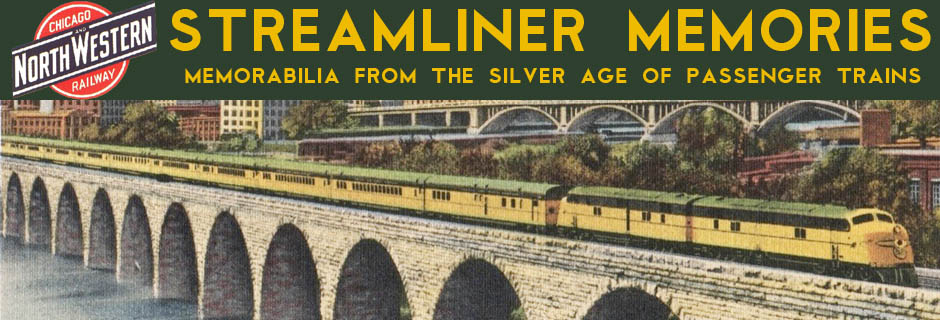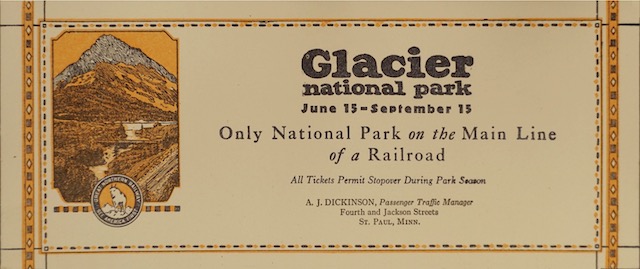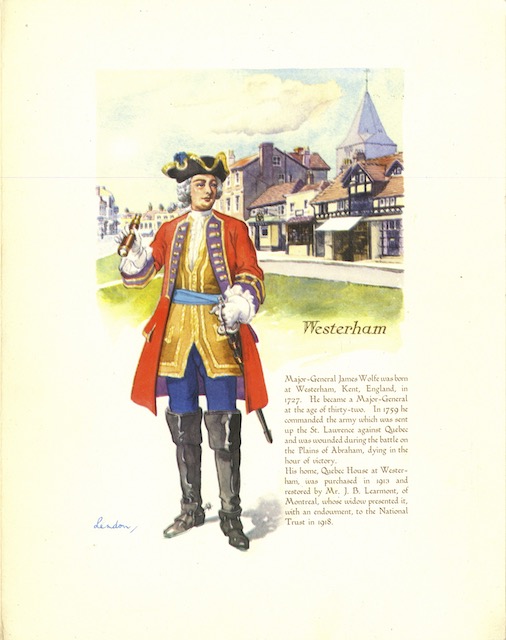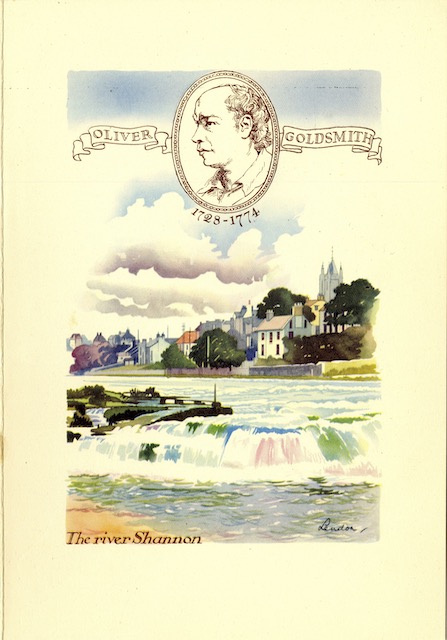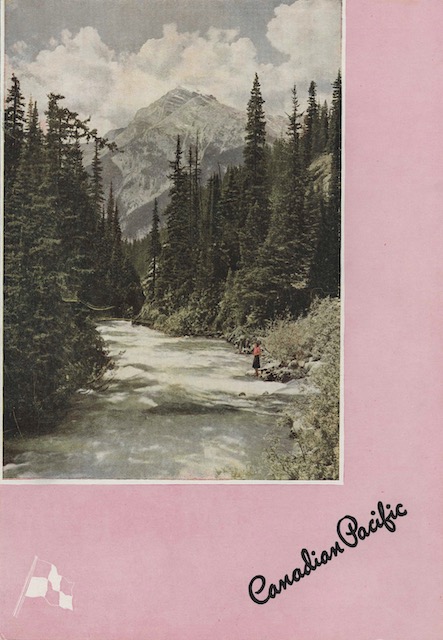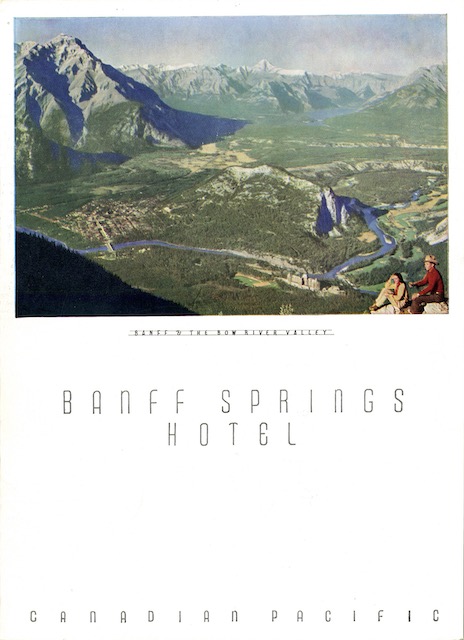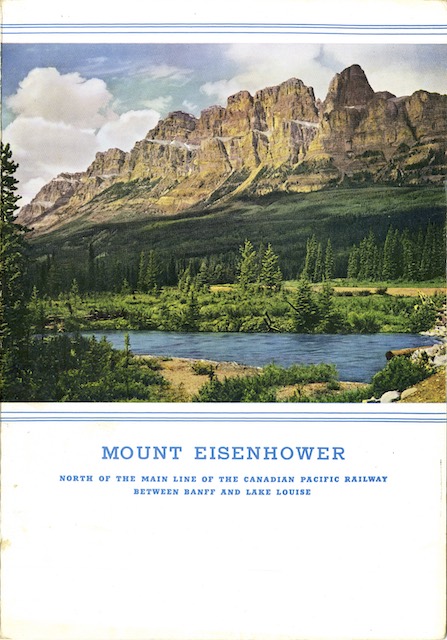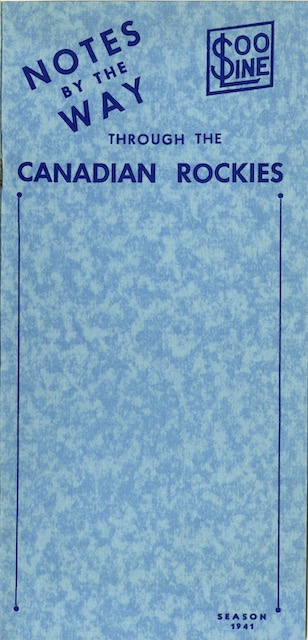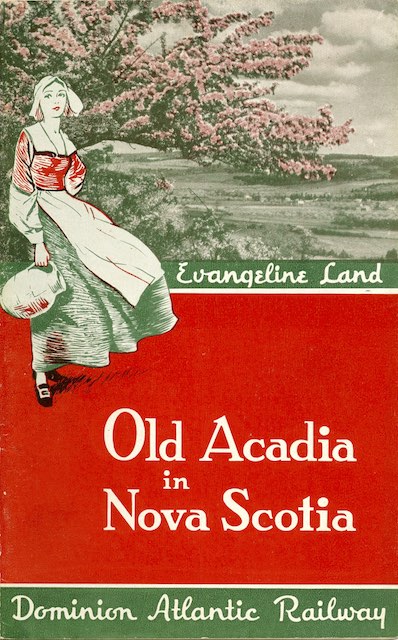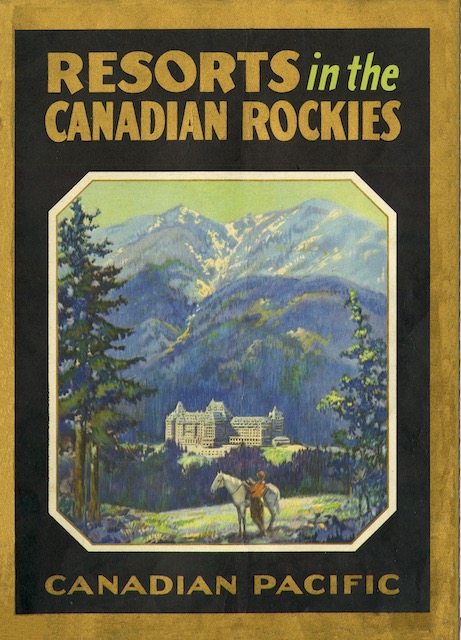In 1923, Ralph Budd was president but Louis Hill was still chairman of the board of the Great Northern Railway. This menu is from a Chairman’s Special Western Trip taken that year and is for dinner on Friday, October 12. October was too late for a comfortable trip to Glacier so the destination was more likely to be Seattle.
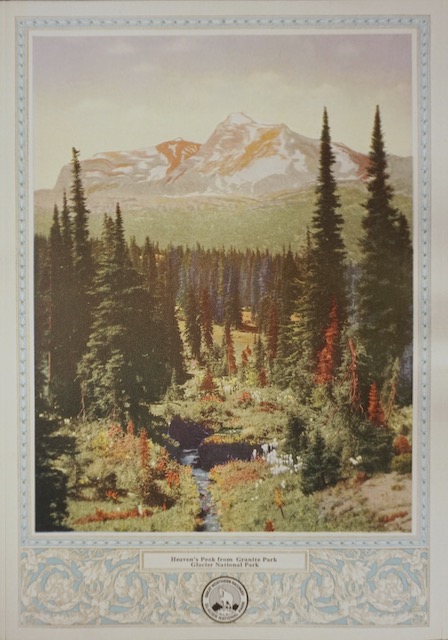 Click image to download a 390-KB PDF of this menu from the Minnesota History Center.
Click image to download a 390-KB PDF of this menu from the Minnesota History Center.
As I read the menu, it offered a six-course meal: celery or olives, cream of tomato soup, lake trout, cucumbers to clear the palette, green peppers stuffed with sweetbread or roast chicken accompanied by mashed potatoes and cauliflower Hollandaise, dessert, and a beverage. Either the railroad or Hill himself wanted to appear frugal as the menu is printed on a card rather than a folder as would appear in a regular dining car.
